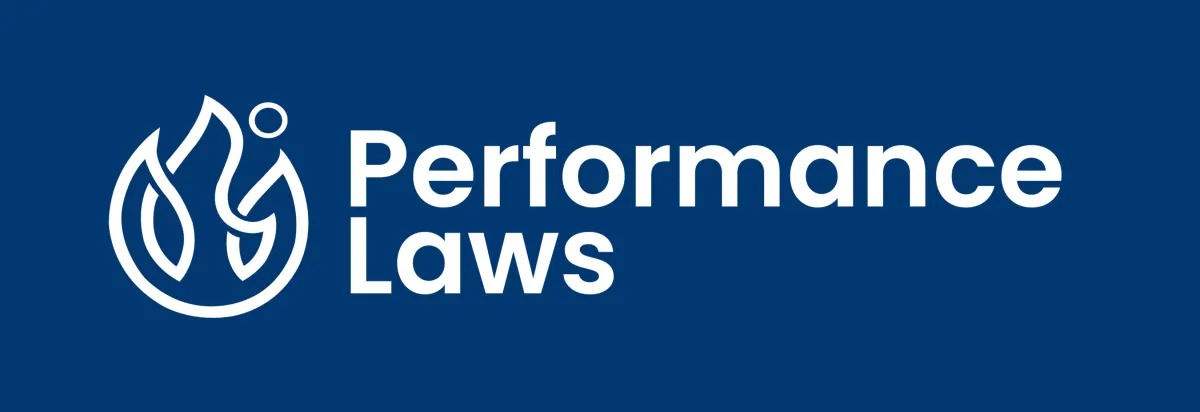
Alexandra Laws
High Performance Coach
for Athletes and Executives,
Speaker and Educator

The Ultimate Guide to Building a Performance Culture: How Objective Health Data Transforms Teams
The Ultimate Guide to Building a Performance Culture: How Objective Health Data Transforms Teams

Most companies still measure performance the old way: subjective reviews, gut feelings, and surface-level metrics. But what if you could see exactly how your team's biology affects their work? What if stress levels, sleep quality, and recovery data could predict performance drops before they happen?
That's where objective health data changes everything.
Why Traditional Performance Metrics Fall Short
We've all been there. Sarah seems "off" lately, but her deliverables are on time. Mike's always the first to arrive but his creative output has tanked. Traditional performance reviews would miss these signals entirely, waiting until quarterly check-ins to address issues that started months ago.
The problem? We're measuring outputs, not inputs. We're looking at what people produce, not what's driving their ability to produce it.
Research shows that engaged employees demonstrate 23% higher profitability and 18% higher productivity. But engagement isn't just about motivation: it's deeply tied to physiological factors like stress hormones, sleep architecture, and autonomic nervous system balance.

The Science of Objective Health Data
Your body doesn't lie. While someone might say they're "fine" during a one-on-one, their heart rate variability tells a different story. Cortisol patterns reveal chronic stress weeks before burnout hits. Sleep efficiency metrics show cognitive decline happening in real-time.
Here's what the data actually tells us:
Heart Rate Variability (HRV) measures your nervous system's adaptability. Low HRV correlates with decreased decision-making ability, reduced creativity, and higher error rates. It's like having a biological early warning system for performance drops.
Sleep Quality Metrics go beyond "I got 8 hours." Deep sleep stages, REM cycles, and sleep efficiency directly impact memory consolidation, emotional regulation, and cognitive performance the next day.
Stress Markers through cortisol patterns and recovery metrics show when someone's operating in survival mode versus peak performance mode. Chronic elevation leads to decision fatigue, reduced collaboration, and increased sick days.
The beauty? This data is objective, measurable, and actionable.
How Health Data Transforms Team Dynamics
When teams start using objective health data, three things happen immediately:
Conversations shift from blame to biology. Instead of "Why didn't you catch that error?" it becomes "Your stress markers were elevated: what support do you need?" This creates psychological safety that actually improves performance.
Proactive interventions replace reactive damage control. Teams can adjust workloads, modify deadlines, or provide resources before someone hits the wall. It's predictive rather than reactive.
Individual optimization scales to team optimization. When everyone understands their personal performance patterns, team scheduling, meeting structures, and project timing can align with collective biological rhythms.

The Performance Laws Approach: Real Metrics, Real Results
At Performance Laws, we don't do wellness theater. We measure what matters: the biological markers that directly impact cognitive performance, stress resilience, and team cohesion.
Our approach centers on three core metrics:
Stress Load Analysis: We track cortisol patterns, HRV trends, and recovery data to identify when individuals or teams are approaching overload. This isn't about working less: it's about working smarter within biological limits.
Sleep Architecture Optimization: Quality sleep isn't a luxury: it's a performance requirement. We monitor sleep efficiency, deep sleep percentages, and REM cycles to optimize cognitive function and emotional regulation.
Recovery Protocols: Active recovery isn't downtime: it's an investment in sustained high performance. We track recovery metrics to ensure teams can maintain peak output without burning out.
The goal isn't perfect health: it's optimized performance through biological awareness.
Practical Implementation: From Data to Action
Rolling out objective health data requires more than just handing out fitness trackers. Here's how high-performing teams actually implement this:
Start with leadership buy-in. If executives aren't modeling data-driven health decisions, teams won't adopt them either. Leaders need to share their own metrics and show how they adjust behaviors based on data.
Focus on correlation, not causation. The data shows patterns: low HRV before big presentations, poor sleep during project deadlines, elevated stress during team conflicts. Use these insights to optimize conditions, not to diagnose problems.
Create feedback loops. Weekly team dashboards showing collective stress levels, sleep quality trends, and recovery patterns enable real-time adjustments to workloads and expectations.

Implement intervention protocols. When data shows concerning trends, have clear responses ready: schedule adjustments, workload redistribution, recovery blocks, or additional support resources.
Measuring Cultural Transformation
How do you know if objective health data is actually transforming your culture? Look for these indicators:
Reduced reactive firefighting. Teams using health data see 40% fewer last-minute deadline extensions and 30% fewer burnout-related absences because they're intervening proactively.
Improved psychological safety scores. When performance conversations center on biological optimization rather than personal shortcomings, trust and collaboration increase measurably.
Sustained high performance periods. Instead of boom-bust cycles, teams maintain consistent output with lower stress markers and better recovery patterns.
Enhanced decision-making quality. With better sleep and managed stress levels, teams make fewer errors and demonstrate improved strategic thinking.
Real Outcomes: What Changes When Teams Use Health Data
The transformation isn't just theoretical. Teams implementing objective health data see concrete changes:
A tech startup reduced their sprint burnout rate by 60% by aligning high-intensity work periods with team recovery data. Instead of pushing through fatigue, they learned to optimize timing.
A consulting firm decreased turnover by 45% by using stress markers to identify overloaded team members before they reached breaking points. Early intervention prevented burnout and improved retention.
A creative agency improved client satisfaction scores by 25% by scheduling brainstorming sessions when team HRV indicated peak cognitive flexibility rather than arbitrary calendar slots.

These aren't wellness initiatives: they're performance optimization strategies based on biological reality.
The Future of Performance Culture
Traditional performance culture asks: "Are you meeting expectations?"
Health data-driven performance culture asks: "What do you need to consistently exceed expectations?"
This shift from evaluation to optimization changes everything. Instead of managing people like machines with fixed capabilities, we're working with human biology to achieve sustained peak performance.
The companies adopting this approach aren't just seeing better quarterly numbers: they're building competitive advantages through human optimization. While competitors burn through talent, data-driven teams sustain excellence.
Objective health data isn't about creating a culture of surveillance. It's about creating a culture of support, optimization, and sustainable high performance. When teams understand their biology, they can work with it rather than against it.
The question isn't whether objective health data will transform workplace culture: it's whether your organization will lead this transformation or follow it.

Our Team of expert is dedicated
to providing tailored solution that enhances productivity, communication and overall business success
©2025 Copyright. All rights reserved




